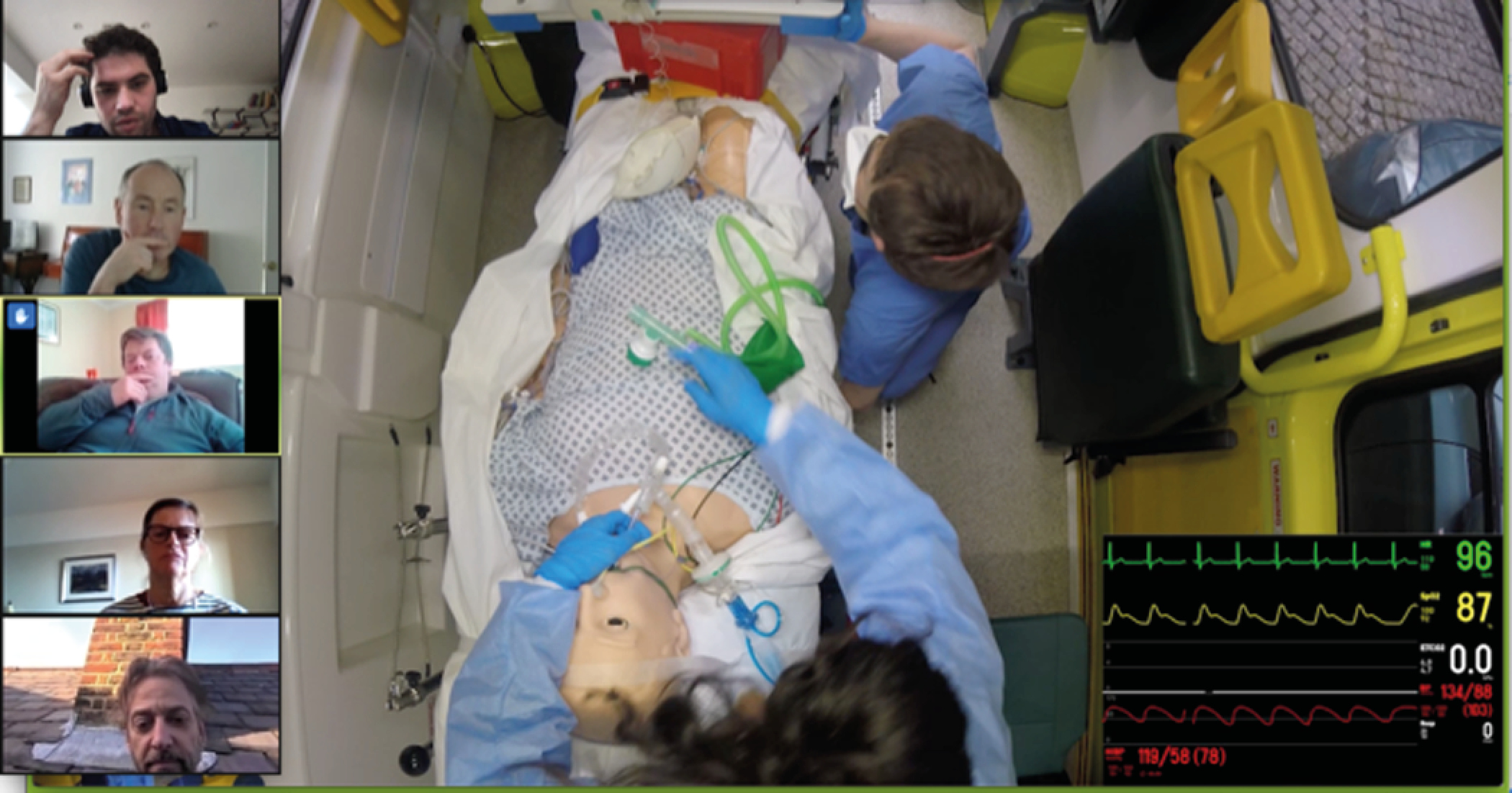
Critically ill patients require transfer within and between hospitals – a necessity amplified by ITU capacity pressures during the COVID-19 pandemic. This rising demand highlighted the need for dedicated transfer teams. Alongside establishing and expanding a cross-sector transfer team, we necessarily needed to meet growing training requirements. Transfer medicine is a core competency for intensivists, anaesthetists, ITU nurses and pre-hospital staff, with simulation recommended in the respective curricula. However, COVID-related restrictions alongside demands on staff’s time, limited opportunities for face-to-face training. We overcame these challenges by developing an online simulation-based course. Teleconferencing has previously been received favourably and rated highly for educational benefit [1]. Our innovative programme uses e-learning and interactive video teleconferencing to combine the requirements of distanced learning with the benefits of simulation.
The aim of the study was to test the efficacy of and response to remote simulation-based training in transfer medicine.
Before attending the online simulation, multi-disciplinary participants completed 3 hours of interactive e-learning hosted online via the platform Rise. This incorporated case-based discussions, practical assignments and filmed presentations. Simulation utilized Zoom teleconferencing to immerse participants in clinical transfers. We used high-fidelity, pre-recorded scenarios made with a mannequin simulator and high-definition video. The participants observed the simulated transfer of critically ill patients (Figure 1). Scenarios paused at set intervals facilitating debriefing utilizing electronic whiteboards and interactional tools available in Zoom to elicit learning. The course was delivered twice. Each cohort completed a pre- and post-course test to assess learning of the intended learning objectives.


A total of 21 multi-disciplinary participants completed training: 43% doctors and 57% nurses. 100% of respondents (18) rated the course 5/5 on the Likert scale when asked ‘how much did you enjoy the course’ and 100% would recommend the course to colleagues. All rated the course extremely relevant to their practice. Average assessment scores pre- versus post-course improved by approximately 20% (74.3% to 94.4%) (Figure 2).


We developed an effective and well-received remote simulation transfer course to deliver training to a wide-reaching audience. Participants were enthusiastic about the innovative and interactive approach, finding the online course enjoyable and relevant to their clinical practice. Results suggest the course effectively increased learning. The flexible nature of online remote provision allows for delivery at scale, to meet a rising demand. Further evaluation will establish the extent at which this training translates to performance, such as a reduction in adverse events in transfer practice.
1.